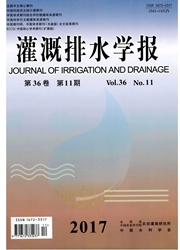

 中文摘要:
中文摘要:
利用气候倾向率、M-K检验、EOF、小波分析等分析方法对1953-2012年间松花江流域的降雪量与降雪日数时空分布及演变趋势进行了分析。结果表明:年平均降雪量介于13.41~35.26mm,呈先降低后上升趋势,突变发生在2001年。降雪日数集中在15~25日,随时间呈微弱增加趋势。松花江下游及牡丹江流域降雪量年际变率大,其次是嫩江上游,而松花江腹地较小。降雪日数最大变化处于嫩江上游,其次是松花江下游和汤旺河流域。空间分布上,降雪量与降雪日数均以嫩江与松花江干流交汇为中心,呈辐射状增加。
 英文摘要:
英文摘要:
Snowmelt runoff is the major supply source of river runoff in black soil area of northeast China during drought period,and snowfall is the material basis of snow and a prerequisite to snowmelt runoff. The temporal and spatial distribution and evolution trend of snowfalls from 1953 to 2012 in Songhua river basin were analyzed.The results showed that the average annual snowfall was between 13. 41 and 35. 26 mm,the trend showed downward after rising,and the mutations occurred in 2001. Snow days were concentrated in 15 ~ 25,and showed growth trend over time. Interannual variability maximum of snowfall were concentrated in the lower reaches of Songhua river and Mudanjiang river basin,next was upstream of Nen river,while that in Hinterland of the Songhua river was small. The biggest change of snowfall days was in upstream of Nen river,and then the lower reaches of Songhua river and Tangwanghe basin. The spatial distribution of snowfall and snow days was both centering on the intersection of Nen river and Songhua river in the west,increase radially and the regional differences were significant.
 同期刊论文项目
同期刊论文项目
 同项目期刊论文
同项目期刊论文
 期刊信息
期刊信息
